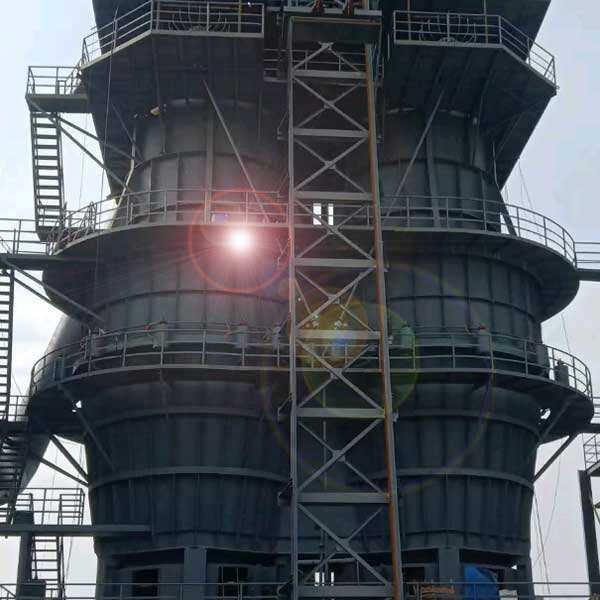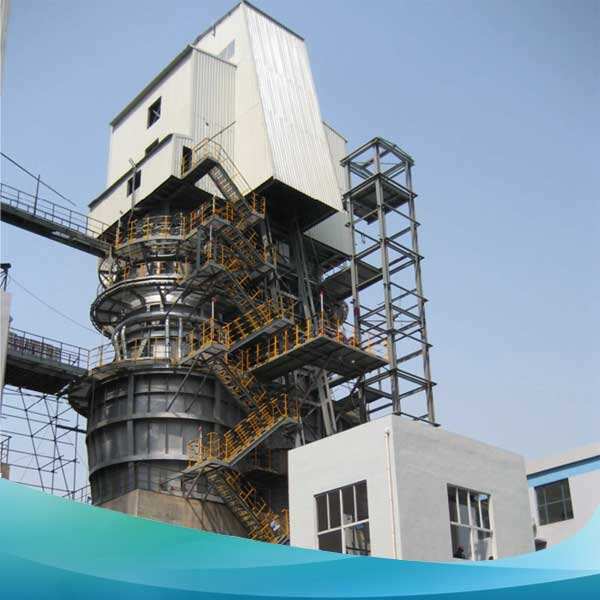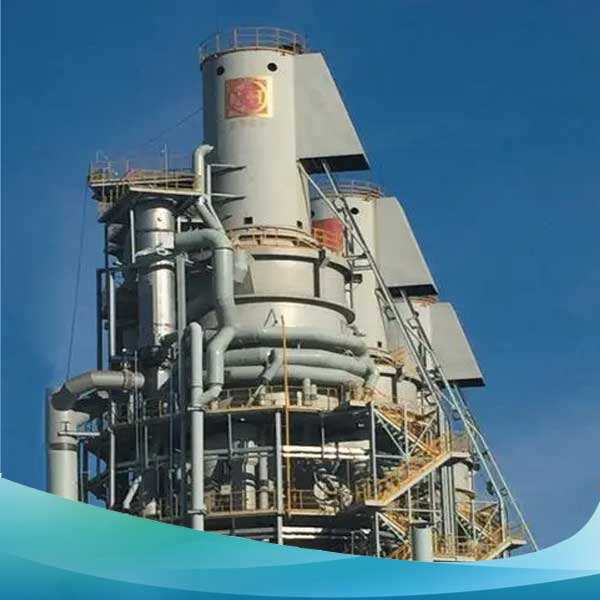Một Lò Quay: Quy Trình Sản Xuất Xi Măng Điều này sẽ là một cái nhìn thực tế về quy trình liên quan đến việc sản xuất xi măng và cách các lò quay được sử dụng để làm ra nó. Lò quay là thiết bị cơ khí lớn của toàn bộ dây chuyền sản xuất và ảnh hưởng sâu sắc đến nhiều lĩnh vực công nghiệp khác nhau. Hãy tưởng tượng những lò nung khổng lồ, siêu nóng có thể thực hiện vô số công việc hữu ích. Trong khi quay xung quanh trục của mình, những máy móc hình trụ này sử dụng chuyển động của chúng để biến các nguyên liệu cơ bản thành các thành phần phức tạp. Các lò quay công nghiệp có thể thực hiện nhiều nhiệm vụ, từ sấy khô khoáng sản đến xử lý các loại chất thải khổng lồ, khiến chúng trở nên rất đa dạng và hữu ích. Một trong những sự khác biệt quan trọng nhất giữa các lò quay hiện đại và các mô hình cũ hơn là chúng có thể điều chỉnh tốc độ quay một cách rất nhỏ. Điều này có nghĩa là bằng cách sử dụng hệ thống truyền động tốc độ biến thiên, lò của bạn kết hợp quá trình truyền nhiệt và cần đúng thời gian xử lý cho vật liệu của bạn để hoàn thành quá trình xử lý nhiệt. Hơn nữa, hệ thống làm mát vỏ lò có thể giảm thêm stress nhiệt, giúp kéo dài tuổi thọ của thiết bị, và các hệ thống đốt cháy siêu hiệu quả với khả năng đốt kép có thể giảm thiểu khí thải. Nó cho phép tối ưu hóa hiệu suất hoạt động thông qua các điều chỉnh động chính xác hơn dựa trên các hệ thống kiểm soát tiên tiến với giám sát thời gian thực và phân tích dữ liệu.
Trong thời gian hiện tại, lò quay đã trở thành một trong những công cụ thiết yếu giúp thúc đẩy các thực hành công nghiệp và sản xuất bền vững. Các thiết bị kiểm soát ô nhiễm hiện đại như tháp rửa khí và bộ lọc được sử dụng trong các lò này để giảm thiểu các tác động xấu. Hơn nữa, lò quay có thể được đốt bằng các loại nhiên liệu thay thế như nhiên liệu từ chất thải, giảm sự phụ thuộc vào nhiên liệu hóa thạch và cung cấp phương pháp thân thiện với môi trường để xử lý chất thải. The Chế biến vôi việc tái chế nhiệt độ có thể được coi là nhiệt thải, đạt được bằng cách giảm dấu chân carbon (có lẽ là tổng năng lượng), trở nên hiệu quả hơn một cách chủ động cho một số hệ thống này để khôi phục chức năng ít nhất một phần
Lò quay được sử dụng bởi hàng chục ngành công nghiệp nhờ tính đa dụng của chúng. Đặc biệt, chúng được sử dụng trong việc nâng cấp các động mạch từ mức thấp lên đến 1.000 tấn/giờ và hơn thế nữa, cũng như sử dụng giường lưu hóa cho các khu vực thu hồi đá. Trong quản lý chất thải, lò đốt được sử dụng để xử lý và tiêu hủy chất thải nguy hại, y tế, và chất thải rắn đô thị. Lò quay cũng được sử dụng để thực hiện các quy trình như tiền điều kiện cho thức ăn chăn nuôi, sấy than hoạt tính và oxy hóa bùn cống; chúng còn được sử dụng để tan chảy các thành phần hóa học khác nhau trong quá trình chế biến kim loại. Sự linh hoạt của lò quay là yếu tố cần thiết cho việc sử dụng chúng trong nhiều ứng dụng khác nhau để đạt được các quy trình mong muốn.
Việc kiểm soát nhiệt độ của vật liệu có thể là một khía cạnh quan trọng trong quá trình vận hành lò quay, như bạn có thể đã biết từ việc điều khiển máy sấy của mình. Nhiệt độ ảnh hưởng đến cả tốc độ phản ứng hóa học (xử lý nhiệt) và sự thay đổi đặc tính vật lý (sấy khô). Trong các quy trình sản xuất xi măng/calcining và nhiều quy trình khác, việc duy trì nhiệt độ là cần thiết để đảm bảo chất lượng sản phẩm tốt hơn. Pensalab có những công nghệ mới trong việc tạo hồ sơ nhiệt liên quan đến vùng thông minh và vị trí đặt các bộ làm nóng, cung cấp sự phân bố nhiệt đều dọc theo chiều dài của lò. Vì nó kiểm soát nguồn cung nhiên liệu, luồng không khí và quá trình làm nóng một cách tối ưu nên phương pháp này không gây lãng phí năng lượng như một số trường hợp sai sót khi nhiệt độ xuống dưới 0 hoặc vượt quá mức tối đa cho phép của vật liệu, ví dụ thép không gỉ, dẫn đến không có sự suy thoái do nhiệt độ cao.
Những lò quay được thiết kế tùy chỉnh đóng vai trò quan trọng trong việc xử lý vật liệu đúng cách. Tất cả các giải pháp này đều được thiết kế bằng cách xem xét đặc tính của vật liệu đầu vào và năng suất sản xuất phù hợp. Một giải pháp cung cấp cấu trúc mô-đun để dễ dàng lắp đặt và nâng cấp, cùng với thông số kỹ thuật thiết bị chính xác đảm bảo kết quả bền lâu ngay cả trong điều kiện quá trình khắc nghiệt nhất. Việc có được chức năng mà loại tùy chỉnh mang lại hầu như chắc chắn đáng giá hơn chi phí quản lý bổ sung vì nó không chỉ cho phép tự động hóa nhiều hơn, mà còn giúp tiết kiệm chi phí bảo trì với mức phí vận hành thấp - một lợi nhuận không thể phủ nhận để đạt được ROI có lợi.
Vậy, cuối cùng, đã được chứng minh rằng lò quay là giải pháp đáp ứng một loạt yêu cầu từ ngành công nghiệp và bảo vệ môi trường. Vì chúng có thể phục vụ các ứng dụng công nghiệp đa dạng và đáp ứng nhu cầu của khách hàng cần kiểm soát nhiệt độ cao, cùng với chức năng xử lý vật liệu mang lại hiệu suất không ngừng cải tiến, giá trị của chúng sẽ tồn tại lâu dài trong kỷ nguyên công nghệ tiên tiến đang phát triển nhanh chóng trong ngành công nghiệp. Khi các ngành công nghiệp ngày càng hướng tới sự bền vững, lò quay sẽ tiếp tục duy trì vị trí là công nghệ tiên tiến nhất để tạo ra một tương lai xanh hơn.
Cung cấp giá trị cho nhiều phương pháp vận hành và thiết kế khác nhau, những cải tiến này đã 'hiện đại hóa trái tim của bất kỳ lò quay cũ nào' về mặt quy trình hoặc trọng tâm sản phẩm. Bộ điều khiển tốc độ biến thiên - cung cấp sự kiểm soát tốt hơn đối với tốc độ quay của trống và có khả năng điều chỉnh tinh tế tối đa hóa thời gian cư trú truyền nhiệt. Hệ thống làm mát vỏ giúp giảm stress nhiệt và kéo dài tuổi thọ của thiết bị. Các lò nung mới cũng có hệ thống đốt tiên tiến nhất để cung cấp năng lượng tối ưu và có thể, khoảng năm đến tám lần một năm, thay đổi hỗn hợp nhiên liệu chính để giảm thiểu khí thải. Giám sát trực tiếp thời gian thực với phân tích dữ liệu đảm bảo rằng mọi yếu tố của hệ thống đều được chú ý đầy đủ, khóa chặt hoạt động cho quản lý quy trình chính xác và điều chỉnh ngay khi các biến số thay đổi, giữ điều kiện ở trạng thái đỉnh cao nhất.

Trong bản chất phát triển của lò quay trong cuộc sống đương đại, nó không chỉ đơn thuần là vấn đề về khả năng mà còn là một sự thay đổi tất yếu sau khi bền vững đã dẫn đến các phiên bản khác nhau của nó. Sự phát thải các hạt và khí độc hại từ những công nghệ này được giảm đáng kể bằng cách trang bị cho hệ thống các giải pháp hiện đại sản xuất vôi như các biện pháp kiểm soát ô nhiễm như tháp rửa khí và bộ lọc. Ngoài ra, một giải pháp thường xuyên khác để giảm sự phụ thuộc vào nhiên liệu hóa thạch là khả năng vận hành bằng các loại nhiên liệu thay thế - thậm chí cả những loại sử dụng chất thải làm nguyên liệu - điều này biến nó thành một cách thích hợp để xử lý rác thải. Sử dụng năng lượng có thể được tiết kiệm thêm thông qua các hệ thống thu hồi nhiệt, vốn bắt giữ nhiệt thải từ hệ thống và tái sử dụng nó trong quá trình, nhờ đó giảm dấu chân carbon tổng thể cùng với việc tiết kiệm năng lượng.

Như đã đề cập trước đó, điều tuyệt vời nhất về lò quay là chúng có thể được sử dụng trong nhiều ngành công nghiệp và ứng dụng. Chúng tạo thành một phần không thể thiếu trong quá trình khai thác mỏ ở quy mô nhỏ đến lớn trên thị trường khai thác mỏ, các bước tách biệt tại chỗ được coi là thiết yếu cho các shaft sắt. Trong bối cảnh quản lý chất thải, chúng được yêu cầu để xử lý an toàn chất thải nguy hại (cháy hoặc đốt), y tế (bằng autoclave hoặc sóng vi ba) và chất thải rắn đô thị. Trong ngành thực phẩm và nông nghiệp, chúng lò quay lime có thể được sử dụng để chế biến các sản phẩm như thức ăn chăn nuôi hoặc phân bón; trong khi ngành hóa học sử dụng chúng để thực hiện nhiều phản ứng khác nhau. Sự đa dạng về chức năng của lò quay làm cho nó trở thành một thành phần thiết yếu trong nhiều ứng dụng xử lý công nghiệp.

Việc kiểm soát trường nhiệt độ trong lò quay có thể đáp ứng tốt hai yêu cầu này và nó liên quan trực tiếp đến sự thay đổi hóa học dẫn đến các đặc tính vật lý. Việc kiểm soát biến quá trình cũng rất quan trọng vì các đặc tính dựa trên nhiệt độ được đạt được trong quá trình sản xuất phần lớn các sản phẩm như xi măng, clinker và các vật liệu đã nung. Dòng nhiệt ổn định được duy trì từ đầu này của lò sang đầu kia với việc phân vùng cụ thể và bố trí các yếu tố sưởi ấm bằng cách sử dụng hồ sơ nhiệt chi tiết với công nghệ tiên tiến nhất. Trên băng chuyền, có hệ thống kiểm soát nhiệt độ tự động với mức tiêu thụ năng lượng thấp vì hiện tượng quá nhiệt có thể xảy ra trong quá trình xử lý và cung cấp nhiên liệu hoặc dòng khí được điều chỉnh theo thời gian thực (bằng máy thổi được kiểm soát qua hồi tiếp), cũng như sưởi ấm trực tiếp hoặc tùy chọn gián tiếp để ngăn ngừa sự xuống cấp.
hơn 20 năm, cam kết phát triển, nghiên cứu lắp đặt lò quay của lò vôi. Là hoàn toàn tự động với chi phí đầu tư thấp nhất. Lò vôi có tuổi thọ dài hơn và chúng tôi có thể được tin cậy nhờ dịch vụ tuyệt vời và máy nghiền vôi chất lượng cao.
Công ty chủ yếu thực hiện các chương trình kỹ thuật, thiết kế, lắp đặt và điều chỉnh thiết bị lò nung, sản xuất lò nung đạt hiệu quả năng lượng và sinh thái trong lò đứng vôi. Công ty đã xây dựng các lò hoạt hóa với nhiều kích thước khác nhau, bao gồm 150m3, 170m3, 200m3, 250m3, 350m3, 500m3, v.v. Các lò nung đã được vận hành thành công và tạo ra hiệu ứng tuyệt vời! Bằng cách sử dụng công nghệ mới nhất của lò đứng vôi than cốc, lò đứng vôi đốt khí đã trở thành lò quay, và đã ký kết hợp đồng thiết kế với nhiều công ty.
Trong thời gian dài, AGICO đã có đội ngũ kỹ thuật chuyên nghiệp, công nghệ sản xuất trưởng thành, kinh nghiệm sản xuất phong phú, hình thành hệ thống quản lý công nghệ sản xuất lò đứng hoàn chỉnh, làm cho công nghệ lò đứng tiết kiệm năng lượng và bảo vệ môi trường trở nên hoàn thiện. Công nghệ này có chi phí đầu tư thấp, chất lượng tự động hóa cao, chất lượng sản phẩm ưu việt, đồng thời tiêu thụ năng lượng thấp và tuổi thọ lò cao. Nó đã được áp dụng rộng rãi trong các ngành công nghiệp như luyện kim, hóa chất kim loại màu, kim loại, vật liệu xây dựng, cũng như các lĩnh vực khác như gia công sâu, v.v.
AGICO có một đội ngũ kỹ thuật lò quay chuyên nghiệp, chuyên về dự án EPC trọn gói, bao gồm sản xuất, thiết kế lắp đặt, điều chỉnh bảo trì, và các dịch vụ khác. Cung cấp hệ thống dịch vụ trước bán hàng, sau bán hàng toàn diện, cung cấp hỗ trợ kỹ thuật cần thiết để đáp ứng yêu cầu của khách hàng.